Travel Guide for Kanchenjunga Trekking: Routes, Permits & Tips
The Kanchenjunga Trek offers a long, meaningful journey through remote trails surrounded by unique geographical features. It’s an adventure that stands out among trekking experiences, drawing interest from trekkers worldwide. Many factors come into play when planning this trek, including the best time to visit, weather conditions, itinerary options, permits, food, and accommodation.
Our Kanchenjunga travel guide provides all the essential details to help you navigate the trail with ease. With this comprehensive guide, you’ll be ready to plan the ultimate 25-day trek to Kanchenjunga.
Why Trek Kanchenjunga Region? Major Reasons
The Kanchenjunga region offers a rare combination of breathtaking mountain views, remote wilderness, and rich cultural experiences. Trekkers are drawn to its challenging trails, diverse ecosystems, and tranquil atmosphere away from crowded routes. Whether you’re seeking adventure or solitude, the region’s unspoiled beauty and warm hospitality make it a truly unforgettable destination.
- Breathtaking Mountain Views: Kanchenjunga offers panoramic vistas of snow-capped peaks, creating an unforgettable trekking experience. You can enjoy the mind blowing views of five major summits of Kanchenjunga, which are:
- Kanchenjunga Main (8,586 m)
- Kanchenjunga West (Yalung Kang, 8,505 m).
- Kanchenjunga Central (8,482 m).
- Kanchenjunga South (8,494 m).
- Kirat Chuli (Tent Peak, 7,365 m)
- Pristine Wilderness and Remote Trails: The region’s remoteness ensures unspoiled landscapes, providing a perfect escape for those seeking solitude in the Himalayas.
- Diverse Ecosystems and Biodiversity: The Kanchenjunga Conservation Area is home to rare wildlife, such as red pandas and snow leopards, and unique flora.
- Cultural Richness and Hospitality: Trekkers interact with local communities, experiencing vibrant Limbu and Sherpa cultures while enjoying warm hospitality in remote villages.
- Challenge for Adventure Seekers: The Kanchenjunga trek difficulty level is high, attracting experienced adventurers looking for a physically demanding yet rewarding journey.
- Less Crowded Trails: Unlike other popular Himalayan treks, Kanchenjunga offers tranquillity as fewer trekkers venture into this remote, untouched region.
- Varied Trekking Options: Whether you’re planning a Kanchenjunga solo trek or travelling with a group, the region caters to different trekking styles and preferences.
- Unique Geographical Features: Trekkers navigate glaciers, high mountain passes, and lush forests, showcasing the area’s striking geographical contrasts.
Major Factors to Consider While Trekking Kanchenjunga
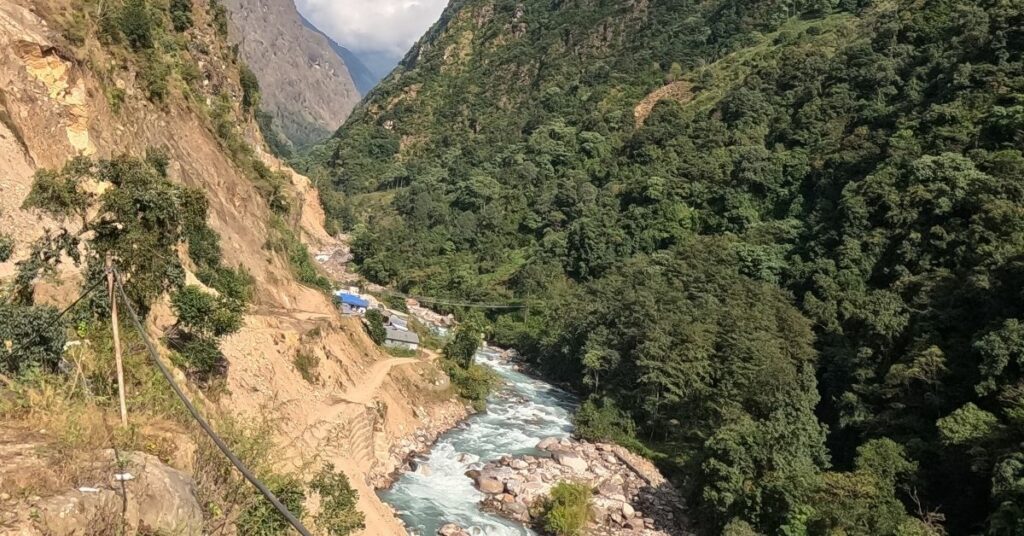
Preparing for the Kanchenjunga trek takes careful thought because the trail is remote and the conditions are tough. It’s vital to understand the best time, difficulty levels, and responses of the environment to ensure a safe and successful experience. From obtaining permits to preparation for altitude sickness, each attribute requires attention to detail. Whether you’re planning a Kanchenjunga solo trek or travelling in a group, these factors can significantly impact your journey. Here’s what you need to consider for a successful trek:
Best Time to Trek Kanchenjunga
The best time to trek Kanchenjunga is in spring-March to May-and autumn-September to November, when the skies are clear and temperatures are moderate. Winter treks are challenging but possible with preparation for extreme cold, while monsoon treks face heavy rains and slippery trails. Those considering off-season treks will find winter offering solitude and snow-covered trails, while trekkers in monsoon should plan carefully to avoid landslide-prone areas..
Kanchenjunga Trek Difficulty
The Kanchenjunga trek is a challenging expedition that puts your endurance to the test with long walking hours, steep ascents, and high-altitude trails. It requires excellent stamina and prior trekking experience, making it unsuitable for beginners or solo attempts. The challenges of the terrain are matched by the unpredictability of the weather, demanding careful preparation. Hiring experienced guides or porters not only makes the journey easier but also much safer, especially for those less experienced with high-altitude expeditions. Though difficult, the trek is rewarding and the scenery is well worth the effort.
Weather and Temperature
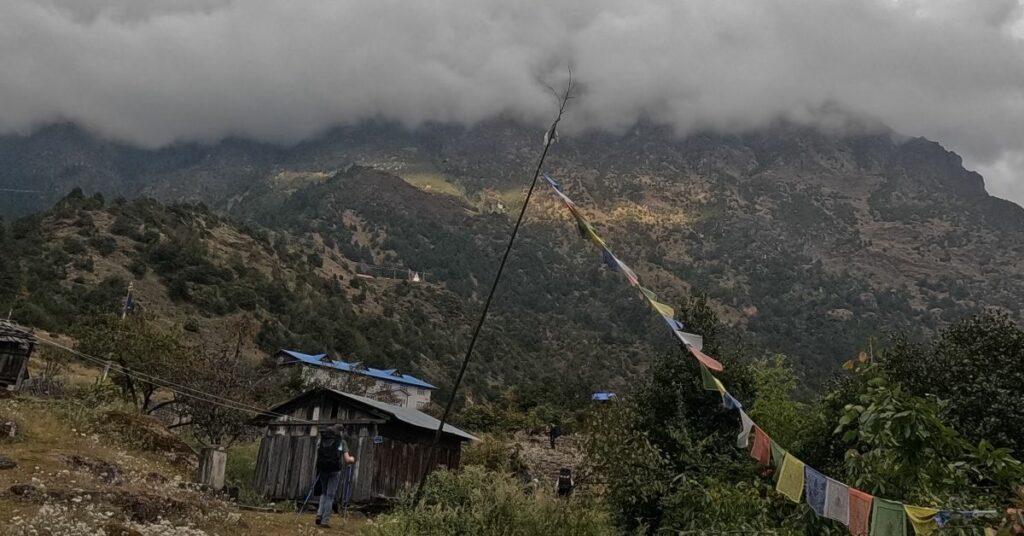
The weather in the Kanchenjunga region varies much with altitude and season. During the main trekking seasons, spring-March to May-and autumn-September to November-temperatures in the lower regions range from 10°C to 20°C, while higher altitudes can dip to -10°C or lower at night. In winter, temperatures can drop below -20°C in the high passes, making it especially challenging. Weather changes may be very sudden, including sudden snowstorms or rain. Preparation for this includes dressing correctly in layers and checking forecasts daily..
Permits and Rules Required for the Trail to Kanchenjunga.
Special permits are required for trekking in the Kanchenjunga region, such as a Restricted Area Permit (RAP) and a Kanchenjunga Conservation Area permit. Most of the time, solo trekking is restricted, and a licensed guide should accompany at least two trekkers. This is meant to ensure the safety and protection of the fragile ecosystem of this area. Applying for permits in Kathmandu simplifies the process and reduces travel delays. Adhering to these regulations helps conserve the area while ensuring a safe trek.
Foods and Accommodation
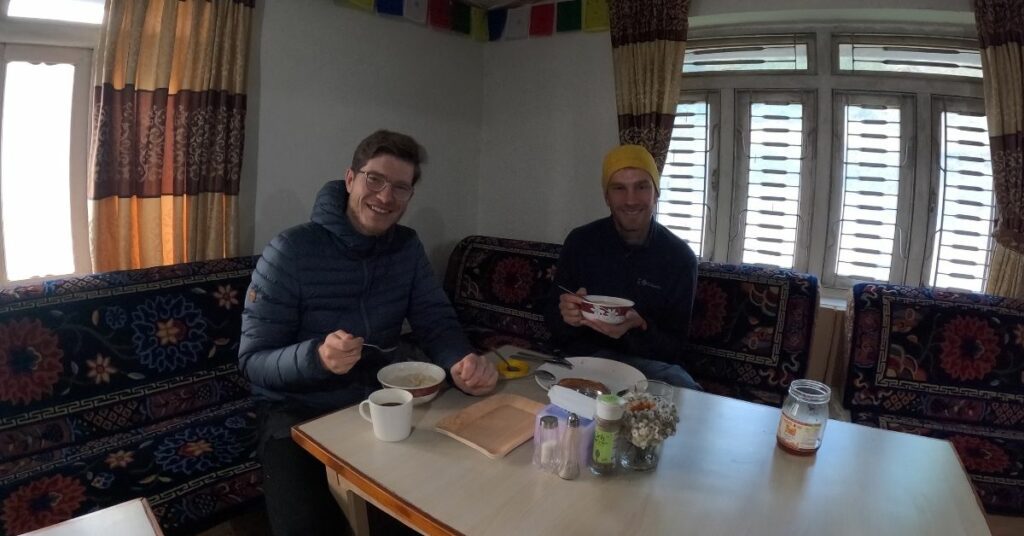
Accommodations in Kanchenjunga range from basic teahouses to campsites, depending on how remote the trail is. Local teahouses offer traditional meals like dal bhat, which are nutritious and energy-rich. Carrying lightweight snacks and water purification tablets enhances your experience in remote areas. Expect limited amenities compared to popular trekking routes like Everest or Annapurna. Being adaptable and self-sufficient ensures comfort throughout your journey.
Altitude Sickness Possibility
Above 3,000 meters, the altitude sickness risk starts to increase. Gradual acclimatization and proper hydration minimize the chances of severe symptoms. Trekkers should recognize early signs, such as headaches or dizziness, and descend if necessary. Consultation with a doctor for medicines like Diamox is recommended prior to the trek. Sticking to a well-paced itinerary prevents health risks and ensures you enjoy the journey fully.
Is a Solo Trek to Kanchenjunga Possible?
The solo trek to Kanchenjunga is possible but comes with strict regulations and significant challenges. The Nepal government requires that trekkers in the restricted region of Kanchenjunga travel in groups of at least two, accompanied by a licensed guide. This ensures safety in the remote and isolated trails where the risks of getting lost or facing emergencies are higher.
The guides, on the other hand, are a legal requirement for solo trekkers but also an important source of support during difficult sections. While the Kanchenjunga solo trek guide can be of help in route finding and cultural interpretation, self-reliance remains critical due to limited infrastructure.
The difficulty and remoteness of the trek demand preparation in all aspects, including physical fitness, gear, and knowledge of high-altitude trekking. Solo trekking, though it provides unparalleled solitude and freedom, is not really recommended for the high Kanchenjunga trek difficulty. With proper planning and adherence to regulations, a solo trek to Kanchenjunga can be an incredibly rewarding experience.
Kanchenjunga Trek Itinerary
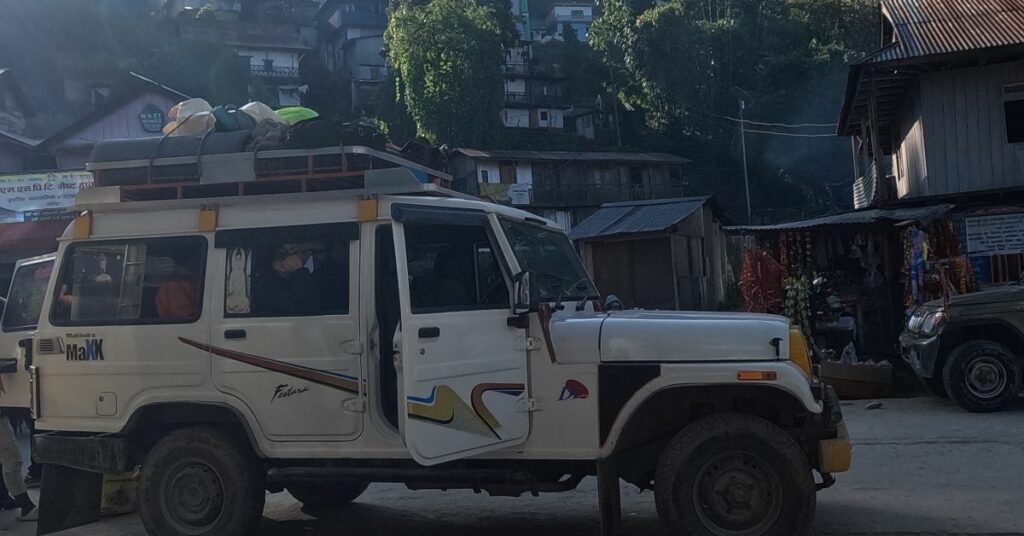
- Day 1: Arrival in Kathmandu
Arrive in Kathmandu, then transfer to your hotel. Briefings on the trek and the opportunity to explore this vibrant city.
- Day 2: Kathmandu to Bhadrapur
Flight to Bhadrapur, which takes 45 minutes. Prepare for the trek while exploring this charming town.
- Day 3: Bhadrapur to Taplejung (2420 m)
After 8-9 hours of road journey through scenic hills and forests, it reaches Suketar in Taplejung for an overnight stay.
- Day 4: Trek to Chhirwa (1185 m)
Trek from Suketar to Chhirwa via rivers, villages, and pastures. Cross the suspension bridge at Thiwa.
- Day 5: Chhirwa to Lelep (1860 m)
Hike for 7 hours, passing Tapethok, where restricted area checkpoints are located. Continue to Lelep for the night.
- Day 6: Lelep to Amjilosa (2510 m)
Trek 5-6 hours through waterfalls and slippery trails with en-route scenery until reaching Amjilosa.
- Day 7: Amjilosa to Gyabla (2730 m)
Trek for 5 hours through dense forests and waterfalls. Spot wildlife on the way to Gyabla.
- Day 8: Gyabla to Ghunsa (3595 m)
A 5-hour trek, mostly on flat terrain. Visit Phole village before reaching Ghunsa, where Tibetan culture thrives.
- Day 9: Acclimatization at Ghunsa
Spend the day adapting to high altitudes. Explore Ghunsa’s surroundings, known for its natural beauty and cultural heritage.
- Day 10: Ghunsa to Khambachen (4100 m)
Hike for 4-5 hours along riverbanks and through high-altitude terrain, passing Rampuk Kharka before reaching Khambachen.
- Day 11: Khambachen to Lhonak (4785 m)
Trek for 4 hours, carefully navigating landslide-prone areas. Follow the trail to Lhonak for an overnight stay.
- Day 12: Lhonak to Kanchenjunga North Base Camp, Back to Lhonak
Reach the fabulous North Base Camp via the day and return downhill to Lhonak, and view the panoramic view of the mountains after reaching the destination campsite.
- Day 13: Lhonak to Ghunsa (3595 m)
Make an easy drop to Ghunsa from Lhonak for about 6 hrs and relax, taking a good time rest.
- Day 14: Ghunsa to Sele Le (4200 m)
From Ghunsa, trek over steep and magnificent forests all the way to Sele Le, with good views of Mt. Makalu.
- Day 15: Sele Le to Tseram (3868 m)
Cross various passes in 6-7 hours with peaceful ponds and views en route to Tseram.
- Day 16: Tseram to Ramche and Visit Kanchenjunga South Base Camp and Return to Ramche
Trek to Ramche, then to Kanchenjunga South Base Camp for stunning mountain views. Return to Ramche.
- Day 17: Ramche to Torongten (2980 m)
Descend for 4-5 hours through beautiful landscapes to Torongten.
- Day 18: Torongten to Suketar (2420 m)
Descend through dense forests, picturesque villages, and terraced fields. After about 7 hours of trekking, you’ll reach Suketar, where you’ll have the final night of your trek.
- Day 19: Suketar to Bhadrapur
Take a jeep or drive back to Bhadrapur, where you can relax after the long trek. Spend the night in Bhadrapur before preparing for the journey back.
- Day 20: Bhadrapur to Kathmandu
Fly back to Kathmandu from Bhadrapur, enjoying the aerial views. On arrival, take time to reflect on this epic journey to the Kanchenjunga region.
Plan your unforgettable Kanchenjunga trek with Mountain Routes! Discover our meticulously crafted 25-day itinerary designed to provide you with the ultimate trekking experience. Whether you’re an experienced trekker or a novice adventurer, our guide will help you navigate the stunning landscapes and cultural richness of this remote region. Start planning your perfect adventure today!
Short Kanchenjunga Trek Itinerary
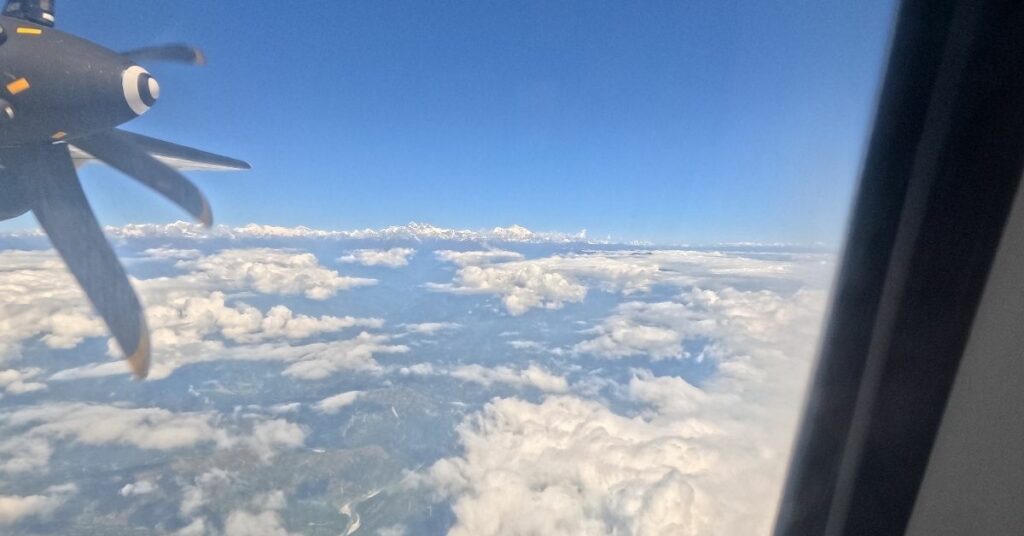
If you are short on time & budget, this short itinerary of the Kanchenjunga trek might be the best pick for you. This Itinerary might become handy for you, since it literally saves a week of your life.
- Day 1: Arrival in Kathmandu
Upon your arrival in Kathmandu, you will be met and transferred to your hotel. Take the day for leisure and preparation for the trek. You can explore some of the city’s historical sites.
- Day 2: Fly from Kathmandu to Bhadrapur, then drive to Suketar
Early morning flight to Bhadrapur and then drive to Suketar (2400 m) – the starting point of your trek. It’s a day for acclimatization and relaxation before starting up your trek.
- Day 3: Suketar to Chirwa (1270 m)
Trekking starts with a gentle down through forests and terraced fields, passing several villages to reach Chirwa overnight.
- Day 4: Chirwa to Sekathum (1640 m)
Continue on the Tamur River today through villages and along green, rich hillsides. Sekathum is relatively quiet and serves as a tranquil place for relaxation after a day’s hiking.
- Day 5: Sekathum to Amjilosa (2510 m)
Cross bridges and ascend to the village of Amjilosa. The trail rises by a gradual incline through open scenery with great surrounding peaks and goes through different types of forests, from lush forests and alpine meadows.
- Day 6: Trek from Amjilosa to Gyabla (2730 m)
The trek continues through thick forests and across a series of bridges. This day’s hike involves a steady climb to the village of Gyabla, which offers great views of the surrounding mountains.
- Day 7: Trek from Gyabla to Ghunsa (3590 m)
Climb towards Ghunsa, a picturesque village lying higher. This day includes a steady ascent, and you can feel the difference in vegetation cover as you approach a higher altitude.
- Day 8: Acclimatization Day at Ghunsa
Spend a day resting and acclimatizing to the altitude in Ghunsa. You can take a short hike around the area or relax and enjoy the mountain views.
- Day 9: Trek from Ghunsa to Kambachen (4110 m)
Today’s trek will take you up to Kambachen, located at a high altitude. The terrain becomes more rugged, and towering peaks and glaciers surround you.
- Day 10: Trek from Kambachen to Lhonak (4790 m)
This day involves a challenging ascent as you make your way to Lhonak, which offers stunning views of Kanchenjunga and other surrounding peaks.
- Day 11: Trek from Lhonak to Pang Pema (5140 m)
Pang Pema is the closest point to Kanchenjunga Base Camp. From here, you’ll have breathtaking views of the Kanchenjunga massif. This is the highest point of your trek.
- Day 12: Return to Suketar and Fly to Kathmandu
Descend back through the same route down to Suketar, from where you will be driven to Bhadrapur airport to fly to Kathmandu. The last evening you enjoyed yourself in Kathmandu, revisiting the fantastic journey it has been.
Essential Items and Gears Required to Trek Kanchenjunga
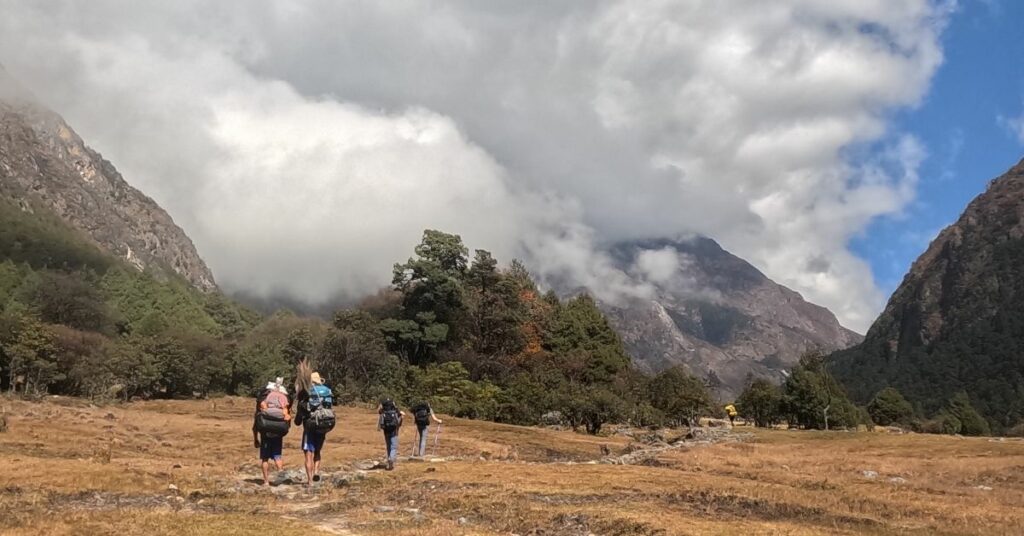
While packing for the Kanchenjunga trek, make strategic decisions that call for safety, comfort, and warmth. From the right clothes to technical gear, each contributes to the success of a trek. A well-prepared trekker will face very limited discomfort and risks for an enjoyable journey.
On a Kanchenjunga solo trek, it is even more critical that you carry the proper gear for your safety in the wilderness.
Important Gears fro Kanchenjunga Trek
- Backpack: It would be good to take a comfortable and strong backpack in which everything would find a place – a volume of 40-50 litres is just perfect.
- Trekking Poles: Provide stability on a long climb or descent, relieving the strain from your knees.
- Footwear: Waterproof trekking boots with ankle support for rough terrain.
- Sleeping Bag: A good, insulated sleeping bag that could handle even -10 degrees Centigrade temperature was important.
- Clothing Layers: Clothing includes quick-dry bases, a warm fleece, and a waterproof layer with cold and wet weather expected.
- Headgear: Windproof hats, bandanas, or beanies keep your head warm; sun hat protects you from UV rays.
- Gloves: Insulated gloves; lighter gloves for some dexterity when needing to do something with fingers and it’s cold and colder at altitude.
- Water Bottles: Hydrating includes refillable water bottles or a hydration system.
- First Aid Kit: A basic first aid kit with necessary medications and supplies for altitude sickness is a must-have.
- Sunscreen & Lip Balm: Protect yourself from the sun’s harsh rays with high-SPF sunscreen and lip balm.
- Headlamp with Extra Batteries: Essential for trekking in the dark or early morning starts.
- Multi-tool/Knife: A versatile tool for general trekking tasks or emergencies.
- Camera/Smartphone: Capture the breathtaking views along the trek.
- Cash: Carry local currency for permits or emergency purchases in remote areas.
Frequently Asked Questions
How long is the trek to the Kanchenjunga region?
The Kanchenjunga trek takes approximately 18 to 22 days, depending on your pace and route. This includes acclimatization days to help with high-altitude challenges. The trek covers a distance of around 200 kilometres (124 miles).
Is the Kanchenjunga trek difficult?
Yes, the Kanchenjunga trek is demanding due to its rugged terrain and high altitude. Trekkers should be physically fit and prepared for long days of hiking. Acclimatization is crucial to avoid altitude sickness.
Can a beginner trek to Kanchenjunga?
The Kanchenjunga trek is better suited for intermediate trekkers, but beginners with good fitness can attempt it. It’s important to be prepared for a physically demanding journey and hire a guide if necessary. Proper acclimatization is key.
Is the Kanchenjunga trek harder than Everest?
The Kanchenjunga trek is considered more challenging due to its remoteness and rugged terrain. While the Everest Base Camp trek is popular, Kanchenjunga offers a more strenuous and less crowded experience. Both treks require good fitness and preparation.